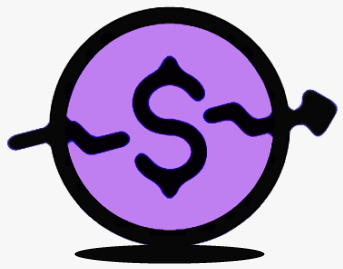Accredited InvestorsAltcoinAnatoli UnitskyAnti-Money Laundering (AML) In CryptoAPIArbitrageArtCoin TokenArticle DirectoryASICAuction Terminology GlossaryBasics of Stock Market InvestingBear MarketBest Crypto Payment Provider In the WorldBitcoinBlockchainBlockchain ConfirmationBlockchain Consensus MechanismBlockchain ForkBlockchain GlossaryBored Ape Yacht ClubBuild a Business That OutperformsBull MarketBuying SkyWay SharesByzantine Fault Tolerance (BFT) ExplainedCasascius CoinCentral Bank Digital Currency (CBDC)Centralized Crypto ExchangeCoinCoinsetCold WalletCollateralCommodity Futures Trading Commission (CFTC)Cross-Chain TechnologyCRUCrypto ExchangeCrypto GlossaryCrypto JokesCrypto Terms to KnowCrypto TickerCryptocurrencyCryptographyCryptojackingCryptounit BlockchainCryptounit GlossaryCryptounit ProgramdApp (Decentralized Application)Dead CoinDecentralized Exchange (DEX)Decentralized Finance (DeFi)Difference Between Bitcoin and EthereumDifferent Ways of Investing MoneyDigital CurrencyDistributed LedgerDo Your Own Research (DYOR)Dollar Cost Averaging (DCA)Dow Jones Industrial Average (DJIA)EncryptionERC-20ERC-721EthereumEvoScentFear Of Missing Out (FOMO)Fear, Uncertainty and Doubt (FUD)Fiat MoneyFNT Fintech CompanyGenesis BlockGlobal Unit PayGlossary of Banking TermsGlossary of Business TermsGlossary of Financial TermsHalvingHODLHot WalletHow Do I Start InvestingHow Rich is Satoshi Nakamoto?How to Create a BlockchainHow to Find Private InvestorsHow to Get Into FintechHow to Program Smart ContractsI Am Thrilled to Be a Part of This Global ProjectInitial Coin Offering (ICO)Initial Public Offering (IPO)Initial Token Offering (ITO)Innovation Basalt TechnologyInnovative Transportation TechnologiesInternational Bank Account Number (IBAN)Investing in Gold Mining StocksInvesting in Gold MiningJagerJoy of Missing Out (JOMO)Know Your Customer (KYC)LedgerLiquidity in CryptocurrencyMaker and Taker Fees in Crypto TradingMarket Capitalization (Market Cap)Meme CoinMetal Credit CardMetaMaskMillenials Now Have Access to Generational WealthMy Best Investment EverNew Digital EvolutionNFT GlossaryOff-Chain TransactionsOn-Chain TransactionsOpen Edition NFTPeer-to-Peer (P2P)Personal Loan GlossaryProbably the Best STO on the MarketProof of Stake (PoS)Real Estate Glossary of TermsReal Estate Investing GlossaryRebase TokenSecurities and Exchange Commission (SEC)Security Token ExchangesSecurity Token Offering (STO)Soulbound Decentralized Identities for Security TokensSoulbound ID Launch by Stobox Proves a SuccessSoulbound TokensStoboxStock Market GlossaryTestimonialsTether Platform and Token (USDT)UnitEx ExchangeUnitsky String TechnologiesUNTBUSDUValidatorWe Started Investing When We Were 25What are Blue Chip NFT?What are Blue Chip Stocks?What are Crypto Assets?What are Crypto Smart Contracts?What are CryptoPunks NFT?What are Digital Assets?What are Digital Collectibles?What are Gas Fees?What are Gas Wars?What are Hashmasks?What are Non Fungible Tokens?What are Non-Sufficient Funds (NSF)?What are Soulbound Tokens (SBT)?What are Stablecoins in Crypto?What are Transactions Per Second (TPS)?What are Utility NFTs?What are Utility Tokens?What Does Burning Crypto Mean?What Does Diamond Hands Mean?What Does Paper Hands Mean?What Does To The Moon Mean?What Does WAGMI Mean?What Happened to Satoshi Nakamoto?What is a 51% Attack?What is a Baby Boomer?What is a Backlink?What is a Banner?What is a Barcode?What is a Bid-Ask Spread in Crypto?What is a Block in Blockchain?What is a Block Reward?What is a Blockchain Address?What is a Blockchain Node?What is a Blockchain Oracle?What is a Blog?What is a Bond?What is a Bot?What is a Broker?What is a Business Accelerator?What is a Cash Cow?What is a Commercial Bank?What is a Commodity?What is a Con?What is a Credit?What is a Credit Limit?What is a Credit Rating?What is a Crypto Airdrop?What is a Crypto Bridge?What is a Crypto Scam?What is a Crypto Token?What is a Crypto Wallet?What is a Crypto Whale?What is a Crypto Winter?What is a Cryptocurrency Public Ledger?What is a Cryptocurrency Roadmap?What is a DAO?What is a Dark Pool?What is a Day Trader?What is a Dead Cat Bounce?What is a Default?What is a Derivative?What is a Digital Credit Card?What is a Fiscal Quarter?What is a Fungible Token?What is a Governance Token?What is a Grace Period?What is a Hard Fork?What is a Hot Wallet?What is a Hybrid Blockchain?What is a Hybrid PoW/PoS?What is a Joint Account?What is a Market Cap?What is a Merkle Tree in Blockchain?What is a Mining Farm?What is a Nonce? What is a PFP NFT?What is a POS System?What is a Prepaid Card?What is a Private Blockchain?What is a Private Key?What is a Public Blockchain?What is a Public Key?What is a Reserve Currency?What is a Ring Signature?What is a Routing Number?What is a Rug Pull in Crypto?What is a Safe Deposit Box?What is a Satoshi?What is a Security Token?What is a Seed Phrase?What is a Shitcoin?What is a Sidechain?What is a Soft Fork?What is a Spot Market?What is a State Bank?What is a SWIFT Code?What is a Tax Identification Number (TIN)?What is a Time Deposit?What is a Transaction Account?What is a Variable Interest Rate?What is a Virtual Assistant (VA)?What is a Virtual Card?What is a Virtual Currency?What is a Visa Card?What is a Whitelist in Crypto?What is a Whitepaper?What is Accounts Payable (AP)?What is AMA in Crypto?What is Amortization?What is an Accrual?What is an ACH Transfer?What is an Actuary?What is an Addendum?What is an Algorithm?What is an Angel Investor?What is an Annuity?What is an Asset?What is an ATM?What is an Atomic Swap?What is an Audit?What is an Avatar?What is an EIN?What is an Embargo?What is an Entrepreneur?What is an IDO (Initial Dex Offering)?What is an Interest Rate?What is an Internet cookie?What is an Investment Bank?What is an NFT Drop?What is an NFT Floor Price?What is an Ommer Block?What is an Orphan Block?What is an Outstanding Check?What is an Overdraft?What is Artificial Intelligence (AI)?What is B2B (Business-to-Business)?What is B2G (Business-to-Government)?What is Bartering?What is Bitcoin Dominance?What is Bitcoin Pizza Day?What is Blockchain Immutability?What is Blockchain Used For?What is BRICS?What is Business-to-Consumer (B2C)?What is C2C (Customer to Customer)?What is Capitalism?What is Catfishing?What is CFD Trading?What is Check Kiting?What is Cloud Mining?What is Communism?What is Content Marketing?What is Decentralization in Blockchain?What is DeFi in Crypto?What is Delisting?What is Depreciation?What is Digital Marketing?What is Diversification?What is Double Spending?What is Dumb Money?What is Dumping?What is Earnings Per Share (EPS)?What is Economics?What is Email Marketing?What is Equity?What is Etherscan?What is Fintech?What is Foreign currency?What is Forex?What is Fundamental Analysis (FA)?What is GameFi?What is Generative Art NFT?What is Gwei?What is Hard Currency?What is Hash Rate?What is Hashing in Blockchain?What is Inflation?What is Initial Game Offering (IGO)?What is Interest?What is Interest Income?What is Mainnet?What is Mastercard?What is Metaverse in Crypto?What is Mining in Cryptocurrency?What is Minting NFT?What is Mobile Banking?What is Money Laundering?What is NFT Alpha?What is NFT Metadata?What is NFT Rarity?What is NGMI Meaning?What is Nominal Interest Rate?What is Online Banking?What is Open-End Credit?What is OpenSea NFT Marketplace?What is Personal Identification Number (PIN)?What is Play-to-Earn?What is Polygon?What is Proof of Authority (PoA)?What is Proof of Work (PoW)?What is Public Key Cryptography?What is Pump and Dump?What is Quantum Computing?What is Refinancing?What is Retail Banking?What is Ripple?What is Sharding?What is Slippage in Crypto?What is Smart Money?What is Solvency?What is Soulbound ID?What is SSL?What is Staking in Cryptocurrency?What is Technical Analysis (TA)?What is Testnet?What is the Ask Price?What is the Better Business Bureau (BBB)?What is the Bid Price?What is the Dark Web?What is the InterPlanetary File System (IPFS)?What is the Gold Standard?What is the Lightning Network?What is the Prime Rate?What is the Sandbox?What is the Secondary Market?What is the World Bank?What is Tier 1 Capital?What is Tokenomics?What is TRC-20?What is Universal Banking?What is Unspent Transaction Output (UTXO)?What is Usury?What is Volatility in Crypto?What is Wash Trading?What is Web3?What is Whisper?What is XRP?What is Zero-Knowledge Proof (ZKP)?Who is Beeple?Who is Satoshi Nakamoto?Who is Vitalik Buterin?Why Tokenization is a Safe HavenWhy You Should Try Your Hand at Trading
Dollar Cost Averaging (DCA)
- Home
- Crypto Glossary
- Dollar Cost Averaging (DCA)
Ever since the inception of cryptocurrencies, individuals have attempted to "time the market," attempting to identify the ideal moment to buy or sell digital assets.

Even professional investors who dedicate all their time to studying the market struggle with this strategy, as it is difficult to predict the future without a crystal ball. As a result, only a few people succeed with this approach. So what's the alternative?
Introducing Dollar Cost Averaging, commonly referred to as DCA in both the stock market and crypto space. This investment strategy involves consistently investing a fixed, small amount of money over time, which may result in better long-term outcomes while also saving time and reducing anxiety.
What is Dollar Cost Averaging (DCA)?
The Dollar Cost Averaging (DCA) strategy operates on the principle of investing a fixed amount of money on a regular schedule, such as weekly, biweekly, or monthly, into a selected asset. This approach aims to minimize the impact of price fluctuations by spreading out the average purchase cost of the asset. Instead of making a one-time lump-sum purchase, investors divide their funds into smaller amounts and invest them at regular intervals.
However, some may question why they wouldn't invest all their capital into an asset when its market price is at its lowest. The answer is that it's difficult to predict when this will occur, a practice known as "timing the market." Even financial professionals struggle with this strategy, making it even more challenging for everyday investors to succeed.
DCA, on the other hand, automates the purchase process and eliminates emotions from the equation. As a result, this strategy has been shown to outperform other strategies like lump-sum investments, as the average cost per share at the end of the allocation period is typically lower than the current market price per share. This approach has been utilized for decades in traditional finance (TradFi) and aims to offer an alternative to the lump-sum (LS) strategy, where investors wait for assets to decrease in market value to buy at the lowest possible price and sell when prices increase.
While "buying the dip" may seem straightforward, determining when an asset has reached the bottom of its price range can be challenging, even for experienced traders. Additionally, if the market is timed incorrectly, investors could lose a significant amount of money, especially during a bearish market.
DCA is often recommended to beginners who lack the time or experience to forecast market returns or who become anxious during bear markets, as it may help them buy when the market is down and cryptocurrencies are cheap if they stick to the plan. Research has shown that DCA consistently outperforms other strategies during bear markets by a significant margin, mainly due to its lower associated risk.
One of the main reasons DCA is so effective is that it removes emotions from financial decisions, which can lead to rash decisions during times of market volatility. By investing a fixed amount at regular intervals, investors are less likely to be affected by short-term price fluctuations and more likely to experience long-term gains.
DCA can be advantageous during bear markets as it allows for the purchase of more shares due to the lower asset prices. In addition, DCA is considered a preferred strategy because it ensures that available funds are continuously invested rather than being held in anticipation of timing the market or driven by FOMO (Fear of Missing Out). As the saying goes, "time in the market beats timing the market."
Can DCA Build Crypto Wealth?
DCA has benefits for crypto investors, including reducing emotional impact and being easy to use for beginners and experienced traders. Even investing at a fixed time can result in a low average purchase price during price corrections.
Experienced traders use DCA due to difficulty in timing the market. Flexible DCA using corrections as a signal is also an option, but requires avoiding FOMO. With proper execution, DCA allows beginners to invest similarly to experienced traders and can be useful even for those with little knowledge or time. Stick to a plan to achieve financial goals.
Surprisingly, you should never stop using the Dollar Cost Averaging strategy. Although typically used for investing, this method can also be applied when selling assets. The process remains unchanged; instead of buying, you press the sell button.
How to Set Up Automated DCA
Dollar Cost Averaging (DCA) is a popular investment strategy that allows investors to buy assets regularly and in smaller amounts, regardless of market conditions. This approach is particularly useful for cryptocurrency investors who want to avoid the stress and emotions associated with timing the market. Setting up automated DCA is an excellent way to execute this strategy without having to monitor the markets constantly.
Here's how you can set up automated DCA for your cryptocurrency investments:
- Choose a DCA platform - Several cryptocurrency exchanges and investment platforms offer DCA services. These platforms allow you to automate your investments, ensuring that you invest the same amount at regular intervals. Coinbase, Kraken, and Gemini are some of the popular exchanges that offer DCA services. There are also third-party platforms like Swan Bitcoin, which allow you to invest in Bitcoin automatically on a weekly or monthly basis.
- Connect your bank account - To set up automated DCA, you need to link your bank account to the exchange or platform. This process may take a few days to complete as the platform may require you to verify your identity.
- Set up a recurring buy - Once your bank account is connected, you can set up a recurring buy on the platform. You can choose how much you want to invest, how often you want to invest, and which cryptocurrency you want to buy.
- Review and confirm - Before confirming your recurring buy, review the details carefully to ensure that they are accurate. Once you have reviewed everything, confirm your investment. The platform will automatically execute the purchase according to your schedule.
- Monitor and adjust - While automated DCA is a hands-off approach to investing, it's still important to monitor your investments periodically. You may need to adjust your recurring buy amount or schedule depending on market conditions or your financial goals.
Is Dollar Cost Averaging (DCA) Safe?
Dollar Cost Averaging is a safer investment method, but it's important to remain vigilant. This approach is suitable for long-term investors, but market changes can affect its effectiveness over time. While it is a relatively secure investment strategy, there is no assurance of a positive return, and investing with funds you can't afford to lose should be avoided.
If you plan to use DCA for retirement or any other term, you can continue using it until you retire. Regardless of your investment horizon, it's essential to have a well-thought-out plan before starting your DCA strategy.
Related Articles

Fear Of Missing Out (FOMO)
FOMO is a significant factor in crypto trading due to the potential for huge profits in the young and unstable market. The success stories of...

Bear Market
Dollar cost averaging is another strategy that involves making regular, small purchases over time to minimize...

What is Volatility in Crypto?
Secondly, the presence of whales, individuals or groups that hold a large amount of a particular cryptocurrency, can cause market volatility. When whales hold their...
- Home
- Crypto Glossary
- Dollar Cost Averaging (DCA)